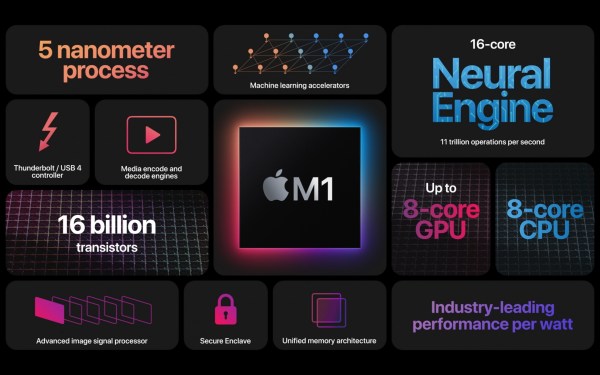Apple Announces its First Self-Developed Processor for Macs
In a significant move, Apple has announced its first self-developed processor for Mac hardware, called the M1. This system-on-a-chip (SoC) is based on an Arm architecture, marking a departure from Intel-built platforms. The switch to in-house processing power raises questions about compatibility with existing Mac models and peripherals.
What Does this Mean for Mac Users?
As details emerge around the new MacBook Air, MacBook Pro, and Mac Mini, users are starting to realize that these machines do not support external graphics cards (eGPUs). This omission has sparked concerns among those who rely on eGPUs to boost their computer’s performance in memory-intensive tasks.
What are External Graphics Cards?
External graphics cards, or eGPUs, allow laptops and underpowered desktops to excel in tasks that require graphical processing power. They’ve been a popular choice for users seeking to enhance their Mac’s capabilities without breaking the bank. In particular, past-generation Mac Mini with extra RAM and an eGPU have demonstrated performance comparable to Mac Pro systems at a fraction of the cost.
The M1 Chip: A New Era for Mac Hardware?
The M1 chip boasts 7 or 8 cores and promises twice the GPU performance while using only 33% of the power compared to a PC GPU when matching performance. If true, this would make it one of the most powerful mobile chips on the market. However, its integrated GPU may not be able to compete with dedicated external graphics cards.
What Does this Mean for Users?
The lack of eGPU support in new Mac models will undoubtedly leave some users feeling abandoned. While Apple’s M1 chip shows promise, its limitations become apparent when compared to more powerful and specialized hardware. This shift raises questions about the future of Mac hardware and whether Apple will continue to cater to users who require external graphics cards.
What’s Next for Apple Silicon?
The M1 chip marks the beginning of Apple Silicon, a new line of processors designed specifically for Macs. As this technology evolves, it will be interesting to see how Apple addresses user concerns about compatibility and performance.
Additional Information
- Apple Announces the M1 Chip: The first processor in its Apple Silicon family
- Apple Brings Back ‘I’m a PC’ Spokesman for Arm-Based Mac Launch Event
- Topics: Apple, Apple Mac Event 2020, events, Hardware




